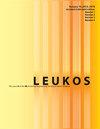Trees in Daylight Simulation – Measuring and Modelling Realistic Light Transmittance through Trees
IF 2.6
2区 工程技术
Q2 CONSTRUCTION & BUILDING TECHNOLOGY
引用次数: 2
Abstract
ABSTRACT Trees influence daylight availability inside and outside buildings by attenuating, scattering, and transmitting light. They resemble a complex fenestration around buildings that change in form, materiality, and permeability based on species of trees, seasonal variations, and environmental or human interventions. The current practice of modeling trees in daylight simulations ignores this complexity and models tree crowns as cones, spheres, or cylinders with assumed reflectance or transmittance value. In this paper, the authors propose an open-source, low-cost method using photography and image processing to measure the on-site transmittance of a tree crown described as gap percentage. Gap percentage is used to generate a 3D primitive crown model that mimics the distribution of leaves and gaps. When used in daylight simulation platforms such as Radiance, the proposed model predicts vertical light transmittance and creates shadow patterns similar to the measured tree crown. The 3D crown model also predicts luminance and illuminance-based daylight metrics similar to a detailed morphological tree model. An open-source program is created and described to generate trees from measured gap percentage data based on this research.日光下的树木模拟。树木透光率的测量和建模
树木通过衰减、散射和透射光来影响建筑物内外的日光利用率。它们类似于建筑周围的一个复杂的开窗,根据树木的种类、季节变化、环境或人类的干预,在形式、材料和渗透性方面发生变化。目前在日光模拟中对树木进行建模的做法忽略了这种复杂性,并将树冠建模为具有假定反射率或透射率值的圆锥形、球形或圆柱体。在本文中,作者提出了一种开源、低成本的方法,利用摄影和图像处理来测量树冠的现场透射率,称为间隙百分比。间隙百分比用于生成模拟叶片和间隙分布的3D原始树冠模型。当在Radiance等日光模拟平台中使用时,所提出的模型可以预测垂直透光率,并创建与测量树冠相似的阴影模式。3D冠模型还预测亮度和照度为基础的日光指标类似于一个详细的形态树模型。基于该研究,创建并描述了一个开源程序来从测量的间隙百分比数据生成树。
本文章由计算机程序翻译,如有差异,请以英文原文为准。
求助全文
约1分钟内获得全文
求助全文
来源期刊

Leukos
工程技术-光学
CiteScore
7.60
自引率
5.60%
发文量
19
审稿时长
>12 weeks
期刊介绍:
The Illuminating Engineering Society of North America and our publisher Taylor & Francis make every effort to ensure the accuracy of all the information (the "Content") contained in our publications. However, The Illuminating Engineering Society of North America and our publisher Taylor & Francis, our agents, and our licensors make no representations or warranties whatsoever as to the accuracy, completeness, or suitability for any purpose of the Content. Any opinions and views expressed in this publication are the opinions and views of the authors, and are not the views of or endorsed by The Illuminating Engineering Society of North America and our publisher Taylor & Francis. The accuracy of the Content should not be relied upon and should be independently verified with primary sources of information. The Illuminating Engineering Society of North America and our publisher Taylor & Francis shall not be liable for any losses, actions, claims, proceedings, demands, costs, expenses, damages, and other liabilities whatsoever or howsoever caused arising directly or indirectly in connection with, in relation to, or arising out of the use of the Content. Terms & Conditions of access and use can be found at http://www.tandfonline.com/page/terms-and-conditions .
 求助内容:
求助内容: 应助结果提醒方式:
应助结果提醒方式:


